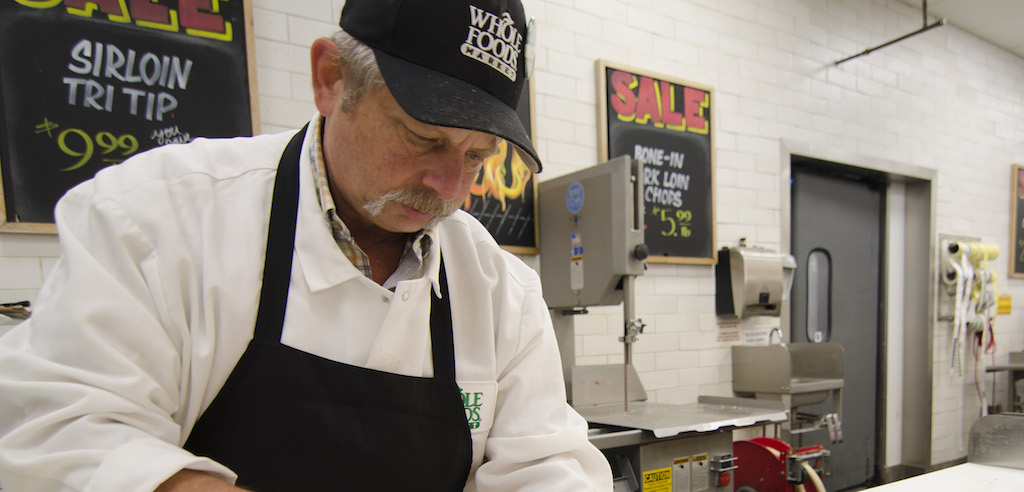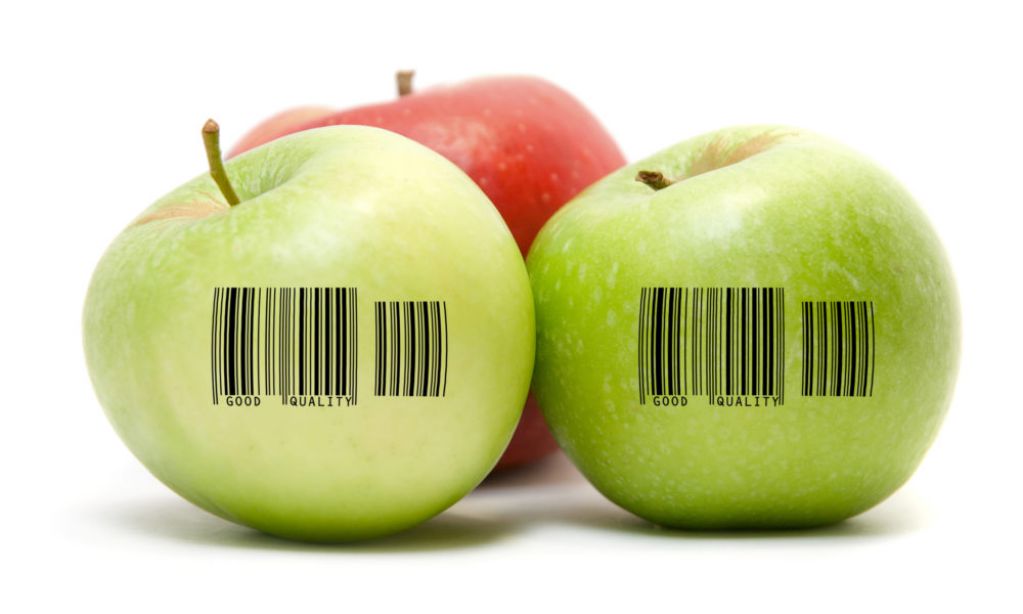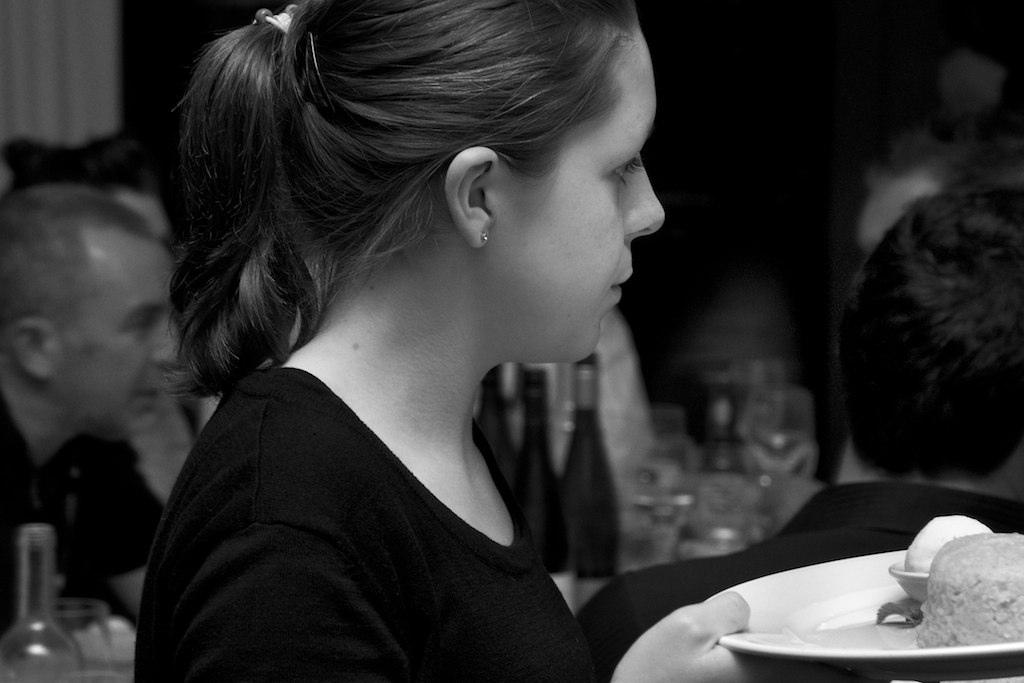The United States is the only industrialized country that doesn’t mandate any form of paid employee leave—not for vacation, or for parental leave, or for sick days. Sure, many companies attract top talent by offering their salaried employees plenty of paid time off. But the only legal guarantee Americans have comes from the Family and Medical Leave Act of 1993 (FMLA): up to three unpaid months for a major life event, including a disabling incident, having a child, and the illness of a close family member.
Restaurant workers have it especially bad. They need to be luckier than other people. They better not get hurt, and they better not get sick. There better not be a death in the family, or a fire. It’s best, in fact, if they steer clear of all forms of tragedy, emergency, injury, and trouble. Because if something terrible happens, they probably won’t be able to afford it.
Restaurant workers are already among the lowest-paid workers in the country. And since their pay depends on hours worked and tips earned, they don’t get paid when they miss work—no matter how valid the reason. Many of them aren’t even entitled to unpaid leave. In order to qualify for FMLA, you must a) have been with your employer for over a year and b) work for a company that employs over 50 full-time workers—requirements that often disqualify kitchen staff, thanks to the industry transience and small staff sizes. Many bussers, servers, and chefs don’t have the right to any time off, for any reason. If they need to miss a day with the flu—let alone a few weeks for surgery—they may not have a job to come back to.
“There’s a lot of people in our industry who are living paycheck to paycheck or sometimes shift to shift, and they’re one incident away from a negative spiral that they may not be able to recover from,” says Ryan Turner, board chairman of the Giving Kitchen, an Atlanta non-profit that’s trying to create an emergency safety net for the city’s service industry. Since 2014, the organization has given away over 450 grants averaging about $1,500—more than $800,000 in aid, including over $250,000 this year. The goal is to be the option for people who have no other option.
For Kasey Price, who works events and guest services at East Atlanta restaurant The Earl, the trouble started with a cascade of alarming symptoms: nausea, sudden bouts of vertigo, hearing loss in her left ear that just kept getting worse. In January 2015, her doctors finally found an acoustic neuroma, a benign growth on the nerve linking her inner ear and brain. The condition was life-threatening and the treatment would be grueling. Every day, for more than five weeks, she’d have to drive to a hospital facility at Emory University to fit her head inside a thermoplastic mask. The custom mold completely encased her skull, except for the breathing holes under her nose, and held her head still while doctors aimed radiation at the tumor.
Price was lucky. She had paid medical coverage through the Affordable Care Act exchange. But, like everyone in the service industry, she only earned wages when she showed up. So getting better meant parting with her paycheck.
Price was also lucky to live in Atlanta. She applied for a Giving Kitchen grant and received funds to cover two months of rent and utilities. That made all the difference. “I wouldn’t have been able to make it if it weren’t for them,” she says. “I would have been financially destitute during that time.”
For now, the Giving Kitchen covers only metro Atlanta, but it intends to scale the model out into Georgia and, from there, the rest of the country. The growth plan is fueled by the idea that if restaurant employees all chip in a nominal amount, no one will need to be impoverished by unexpected calamity. But collecting the money, is easier said than done—and it brings up questions about who should foot the bill.
The Giving Kitchen was born out of that very situation: an unexpected calamity–a medical catastrophe that rallied Atlanta’s culinary community around one of its own. The story starts with Ryan Hidinger, a sous chef at local restaurant Muss & Turner’s, and his wife Jenna. In 2011, all was well. They were finally moving forward on their plan to build a restaurant, Staplehouse, based on the supper club they’d been hosting at their house since 2009. But in December of that year, Ryan was diagnosed with Stage 4 gallbladder cancer. His doctors gave him six months to live.

The Giving Kitchen Ryan and Jenna Hidinger holding court at Staplehouse, the supper club they started in 2009
A group of partners and friends launched a program at 30 local restaurants that allowed patrons to round up their bills to a whole number, donating the spare change to Hidinger’s cause. Then, in January 2014, they threw “Team Hidi” a fundraising event that drew 800 people and raised almost $300,000 dollars. It was such an inspiring display that Turner, in a midnight email to Hidinger, pitched a venture that went beyond Hindinger’s immediate needs. He wanted to help him start finally start his dream restaurant, Staplehouse—but with a twist. Why not design it to give back to the community that contributed so much to his cause?
Hidinger agreed, and Turner secured an $850,000 bank loan—collateralized at $75,000 each by eight friends, seven of whom were local restaurateurs—to start the restaurant that would support the non-profit the Giving Kitchen.
“It happened right before Ryan passed away [in January 2014], a year after he was diagnosed,” Turner says. “He knew it was going to happen.”
From the start, the idea that the restaurant would be the primary revenue driver was probably optimistic. Since opening in September 2015, Staplehouse has racked up plenty of accolades. (It was a finalist for this year’s James Beard Awards for best new restaurant and best new chef, southeast; Bon Appetit just named it the best new restaurant in the country.) But if the Giving Kitchen is really going to cover Atlanta’s entire service industry—and especially if it’s going to grow beyond that—it will need more financial resources than a restaurant can provide.
That’s where the big idea comes in.
The ambition, long-term, is to launch a program that allows large numbers of restaurant workers to pay a little bit into the system that supports them. Ideally, it will work something like union dues, which can be “checked off” directly from each paycheck. Turner’s goal is for an annual Team Hidi event to cover the Giving Kitchen’s overhead, and for the employee-donation program to fund 100% of the grants. There would be several benefits to this approach. It would assure restaurant staff that every penny they shave off their paychecks goes directly to a person in need. By distributing costs across a large pool of micro-donors, drumming up millions of dollars from spare change, no one person bears undue responsibility to give. And it would make potential recipients more likely to use the program. Since employees would all have a little skin in the game, they would be less likely to hesitate to ask for help.

Team Hidi is now an annual event that raises funds for the Giving Kitchen every January
It should be said that this approach revamps a similar—and highly problematic— model that’s already used elsewhere in the industry. Large employers like Applebee’s and Home Depot also build emergency grant programs through small, voluntary paycheck donations, but those programs end up looking like a way to justify skimping on employee benefits. Consider, for instance, the Darden Dimes program, which the restaurant conglomerate Darden—operator of chains like Olive Garden and Longhorn Steakhouse—pitches as a fund for its employees in times of need. Workers definitely take advantage of the program: in 2015, half of the company’s employees gave an average of 45 cents per paycheck, which Darden redistributed as $1.9 million in emergency grants. But what if, instead asking for employees to donate to one another, Darden expanded its own paid leave coverage? Instead, the Darden Dimes program sends this message to employees: We don’t think your benefits are worth paying for, but we’re happy to help you cover yourselves.
“It’s kind of ironic,” says Saru Jarayaman, co-founder of ROC United, an activist group that advocates for expanded service industry benefits. “Our argument is: why don’t you just pay your own workers better?”
The Giving Kitchen doesn’t fall into this category. It’s not a tight-fisted employer; it wants to be an altruistic force for good, an organization that’s helping a community care for its own. But the organization’s independent status makes this work easier said than done.
Turner estimates that $1.5 million annually would cover the Giving Kitchen’s need in Metro Atlanta. Since grants average about $1,500, that’s roughly 1,000 emergency grants a year. To get there on small employee donations alone, TGK would need 30% of Atlanta’s 200,000 restaurant workers to donate $1 per bi-weekly paycheck, or $26 dollars a year. 40% participation, or $2 million dollars a year, would allow it to expand coverage into other parts of the state.
Unlike most nonprofits, the problem isn’t with finding a pool of willing donors. “There is no doubt in my mind, most servers would easily drop a buck into a bucket if they knew it was going to this fund,” Turner says. The evidence suggests he’s right. TGK piloted “Multiply Joy,” its payroll-donation program, at 30 restaurants last year, and it found large numbers of employees were willing to drop a few bucks from their checks. Some employers—like Ruth’s Chris Steakhouse, a national chain with four Atlanta locations—were even willing to match all employee contributions. The issue wasn’t with generosity. It was about the logistical challenges of collecting small contributions on a large scale.
“What we recognized really quickly was while payroll deductions was certainly the most lucrative—for lack of a better word—way to financially connect to the teammates, the processes that we put into place for our beta test ended up relaying a tremendous amount of work to the restaurant,” says Naomi Green, TGK’s director of partnerships, who oversees Multiply Joy. Because TGK is legally responsible for providing a tax letter to anyone who donates, employees must closely track who is donating and how much. Naomi estimates the payroll program caused two hours of administrative work per pay period, just to track small fluctuations in dollar amounts. That ends up being an unsustainable workload.
The other problem stemmed from the industry’s transience and unpredictability: payroll deductions make it easy to collect money, but gives the Giving Kitchen no way to track benefactors as they move from place to place. It’s not just about employees switching between jobs—it’s also about the employers themselves, who are continually starting up and closing down in an industry that sees a lot of success and failure. This was demonstrated in dramatic fashion during the test period when one of the participating restaurant groups, Here to Serve, unexpectedly shut down; the owners divorced, shuttering 10 restaurants and laying off 1,000 employees. TGK started a Facebook group where area restaurants could post their staffing needs, which helped people stay at work, and gave the nonprofit some idea of where its donors were going. Every single one would have to be re-enrolled. Most of them simply disappeared into Atlanta’s kitchens.
The next step will likely involve developing a piece of digital infrastructure, or harnessing the power of one that already exists. Currently, TGK is exploring using an existing platform of some kind—PayPal, say, or Venmo—so that employees can donate directly without their employers’ participation. That, of course, may come with its own set of issues, but Turner still feels convinced that there will be some way to tap into all the good will out there. Later this year, TGK’s staff will convene the restaurants that piloted Multiply Joy, soliciting direct feedback about how the program can be improved.
“It is a massive oilfield of people who want to give,” he says. “The question is, how do we mine this oilfield?”
It’s the million-dollar question—literally. And a lot of future well-being is riding on the answer.











